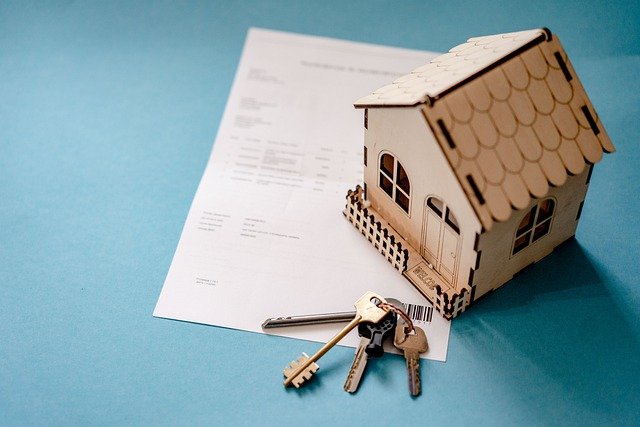A home loan or mortgage payment structures confuse many people because of the complicated calculations. The rent payments are pretty simple because there are no hidden costs or significant taxes involved. Mortgage payments calculate how many years you are paying the mortgage, the interest rate, and insurance costs.
How is a mortgage payment calculated?
Mortgage payments can be tricky to understand in the beginning and seem quite confusing with calculations that sound Greek and Latin. But, almost all the calculations follow a standard procedure, and only the interest rate varies slightly. All mortgages use this standard formula given below to calculate monthly EMI.
M = P[r(1+r)^n/((1+r)^n)-1)]
M – Monthly payment
P – Principal
R – Interest rate
N – Number of payments made over years
All the standard mortgage calculators available online work using this standard formula. Talk to the real estate company and know the actual home price, including hidden costs. Consult the money lending bank and know how much extra they will charge for insurance and taxes. Often, banks take yearly insurance and taxes, which is a one-time payment not included in the EMI. Some banks collect them along with the actual monthly installments.
Mortgage payments can be tricky to understand in the beginning and seem quite confusing with calculations that sound Greek and Latin. But, almost all the calculations follow a standard procedure, and only the interest rate varies slightly. All mortgages use this standard formula given above to calculate monthly EMI. If you’re looking for more information about mortgages and how to make Florida your home, visit https://www.makefloridayourhome.com/
Calculate how much down payment you will make on the actual principal amount you are ready to pay for the home. Deduct that amount from the principal amount and calculate the EMI for the remaining amount based on the number of years you will pay the amount. The standard mortgage repayment years vary from 15 to 20 years. Add the interest rate with the EMI of the principal amount to know the approximate amount you will pay every month.
The processing fee and a few other hidden costs get added to the loan amount. A good property management company representative from Everest, Home365, Mynd are the top companies that guide the customers clearly regarding mortgage payment structure. Several top bank representatives also give precise details regarding the mortgage payment structure and how they manage insurance and taxes.
Insurance and mortgage payment
Two types of insurance are applicable for a mortgage – the homeowner’s insurance and mortgage insurance. Homeowner’s insurance is typical for covering damage costs when an environmental catastrophe occurs. Mortgage insurance is mainly for people who don’t make substantial down payments to help the bank or the money lending organization get back their amount if there is a default.
Private mortgage insurance PMI and or a mortgage insurance premium MIP get collected along with the mortgage EMI. The PMI amount collection stops once 78% of the home loan gets paid, and the MIP amount might decrease as the principal amount comes down.
Also Read: What is Mortgage Pre-underwriting? Is It Worth the Effort?
How to save money on a mortgage loan?
Principal payment: It is easy to save money on the mortgage if you keep paying a certain amount to decrease the principal amount every year. It will increase the insurance, taxes, and interest rate considerably, saving you around 10 to 30% of the final payment.
Penalty and interest rate reduction: Some banks impose a prepayment penalty when you do this, and it is better to avoid getting mortgages from such banks. Some banks require you to pay the same interest rate throughout the years even if you keep decreasing the principal amount steadily. But, you will save a few years of mortgage payments due to early loan closure. Avoid such money lending organizations, as their schemes are not flexible and beneficial to the payer.
Missed payments and penalties: Some banks charge extra for missed payments, while the others give a grace period of nearly 15 days to pay the amount. Some lenders arrange bi-weekly payments or agree to stop the payment collection for a few months until the financial situation improves. Check for the penalties applicable for missed or late fees when you get a mortgage. Negotiate with the bank regarding such payments and make them forego such charges.
Bonuses and reductions: Certain financial institutions arrange for rewards and forego one or two EMIs if you are regular in paying and try to finish the loan earlier. Negotiate to bring the insurance premium rate down if you are paying a substantial down payment. Negotiate with them to increase the reward points, which will bring down the interest rate of your mortgage.
Taxes: Most people get a tax deduction when paying a mortgage, which helps save money paid to the government. Remember, the property value and market value are two different terms, and if the area you purchased home develops fast, you are likely to pay more taxes. However, it is beneficial to many homeowners because the home’s resale value increases considerably.
Consider maintaining your salary account and the mortgage account in two different banks. Almost all banks offer automatic online payment facilities for mortgage collection, which gets deducted from the salary account. Some banks deduct the amount for missed payments from your main account, which might cause issues during emergencies.


